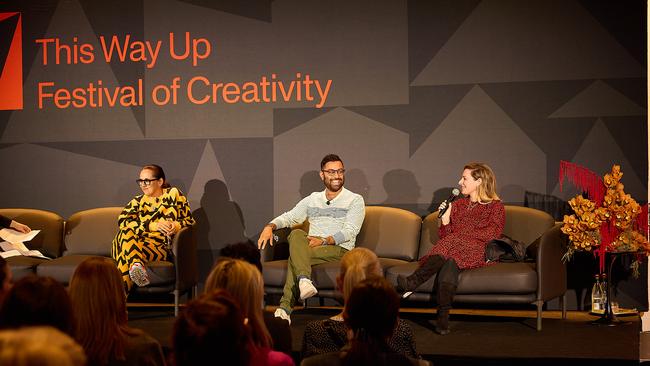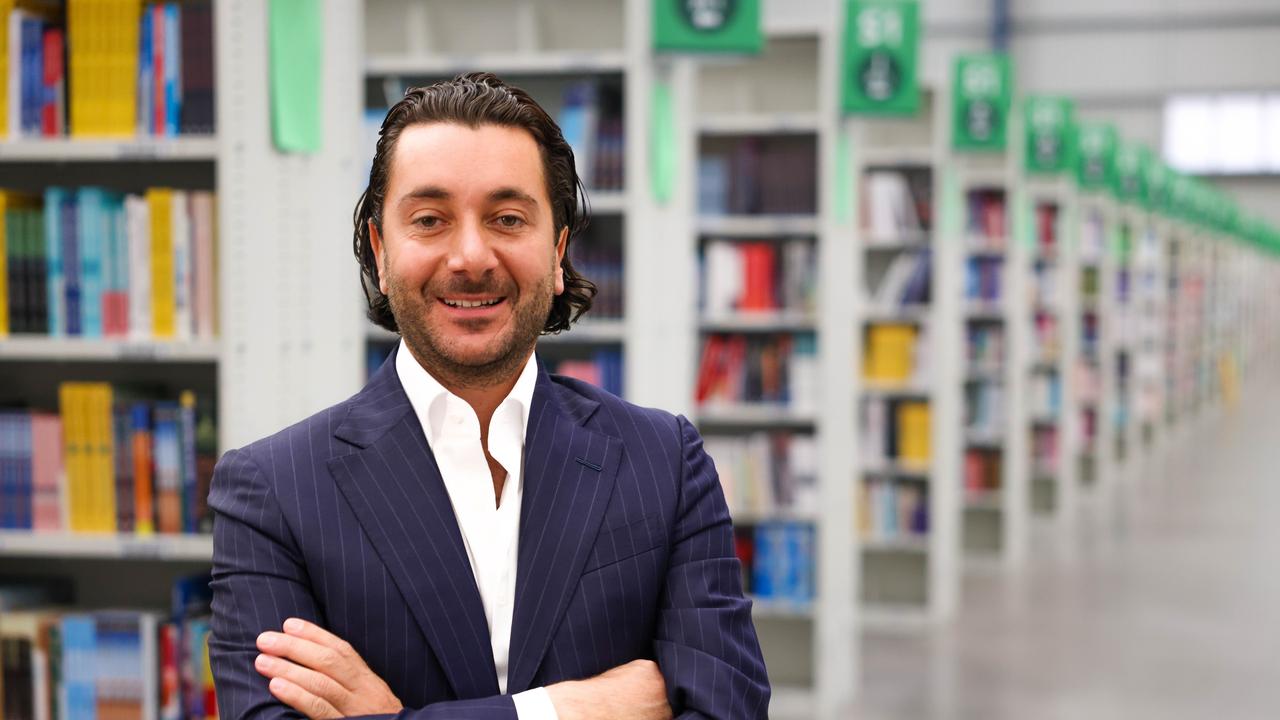Can AI unlock unfathomable new creative opportunities for brands?
Forget the automated doom and gloom that tech companies are promoting, artificial intelligence presents unfathomable opportunities to supercharge creativity, according to experts.

The doom and gloom narrative that AI will take our jobs and crush our creativity is empowering the tech companies and fails to recognise “the unfathomable opportunities” for brands and agencies, according to a panel of creative, technology and marketing leaders.
The panel, hosted by The Growth Agenda as part of the Advertising Council Australia’s (ACA) Festival of Creativity, This Way Up, featured experts from Britain, the US and Australia who discussed the intersection of AI and creativity and myth-busted the idea that it’s all about automating jobs to create greater business efficiencies.
Creative technologist and founder of OK Tomorrow Nilesh Ashra said the market obsession with the production, execution and distribution portion of the creative process was holding back innovation.
“There’s a lot of talk about how we’re going to be able to automate content generation, and take an asset and make two million different variants, and run those variants in every possible channel for zero dollars. I don’t think that’s ever been the interesting part of creativity, or the most valuable part of creativity, if I’m honest. In a world where the cost of content generation goes to zero, ideas will matter more than ever.”
Mr Ashra maintains this narrative only serves the tech companies as it helps their productive AI tools. However, he believes there are significant opportunities for brands and agencies to take the lead with AI and elevate the power of creative ideas.
“I think there’s a massive amount of untapped potential in large language models (LLMs), particularly to turbocharge our ability to do imagination and creative thinking better,” he said.
“I think the problem is that tech companies have no vested interest in exploring that.
“A lot of agencies, brands and marketing organisations are either under-resourced or they’re having to just hold on for dear life, as everyone tells them that AI is going to replace them. Brands and agencies have ceded a lot of ground in the last 10 or 15 years to performance marketing and data-driven marketing, and it hasn’t worked for anybody.

“I don’t know if there’s many people in agencies, whether it’s a network shop or an indie shop, that loves the structure or the economics of their business right now. I don’t think there’s anyone that is thinking I want this to stay the same, because it’s working so perfectly. So even ripping some of that up and figuring out a way to get to the stuff that is really valuable to our brand partners is a significant step.
“AI is presenting us with an ability to tap into a creative brilliance with unfathomable opportunities.”
Mr Ashra maintains the economics of great thinking has become harder but technology isn’t going to solve the problem for the industry.
“You either believe that the last 1 per cent of creative excellence is what matters, or you don’t. And if you believe it then I think it would behove you to get as active and as curious and as experimental with this technology as you possibly can, because you’ve got an opportunity to help find that 1 per cent.”
At OK Tomorrow, Mr Ashra works with brands such as McDonald’s and Spotify as well as creative agencies including Mother and Wieden+Kennedy, but he maintains it’s the creative companies that are responsible for pushing AI innovation.
“I think creative collectives (agencies and consultancies) should be driving the agenda. Future-facing creative capabilities are best incubated in a creative organisation. It’s not even about responsibility.
“I think it’s about the thirst for creative innovation and who provides leadership there. Agencies have got to see the creative opportunity and deliver this to clients. Does your client have the acumen and risk appetite to approve this kind of work? That’s another question altogether!”
However, IAG chief customer and marketing officer Michelle Klein believes it should be a shared responsibility.
“I see it as a collective responsibility,” said Ms Klein. “We’re all learning at the same time, and we need to have a test and learn approach. Starting with understanding the business case, the problem it is solving for customers and working in collaboration from there. Importantly, we’re not setting the rate of adoption and change – our customers are. For brands to be successful, they need to move at the speed their customers are moving, pre-empt what their needs will be next and be open to change. We can achieve this transformation best when we are all taking responsibility for the opportunities that technology presents and working in partnership to deliver better outcomes. And if in doubt, apply Occam’s razor.”

Ms Klein warned marketers and brands to avoid rushing blindly into the AI era and to focus on solving a problem or finding a new way to meet a customer need.
“A marketer’s approach to AI should always begin with an existing customer need that technology can address and will make the customer’s interaction with the brand faster, simpler and more efficient. In its simplest form AI should be seen as a technology solution to an existing customer need, not something introduced for technology’s sake,” she said.
Ms Klein, who oversees the insurance giant’s portfolio of brands, including NRMA Insurance, cited the surge of chat bots as well as the meteoric growth of brands like Uber and Airbnb as examples of how technology can be harnessed to meet customer needs.
“People were already hailing taxis to get from A to B but there was an opportunity to improve this experience by adding a layer of technology and giving customers more visibility and empowerment through the process. It’s a similar story for Airbnb which, through a layer of technology, enables holiday-makers to be more easily connected to local accommodation options.
“Chat bots and messaging tools are a great way for brands to meet customer needs. For example, if your call centre is closed overnight, you can still serve a customer and meet their expectations through well-trained technology, satisfying and managing that expectation in real time,” she said.
Marketers should educate their organisations about the business and customer benefits of AI to help overcome obstacles, said Ms Klein. “The customer benefit is paramount. Be clear on the pain point you can resolve and don’t experiment for the sake of it,” she said.
DDB global chief creative officer Chaka Sobhani agrees with Ms Klein.
“You have to start from the business challenge. It can’t be oh, here’s a really cool idea; you have to question whether it is right for the brand. If you start from there, you can start to understand what the creative solution could be to that problem, because humans are going to be the answer to that. So to engage humans, you have to engage the heart.”
Drawing from her early career experiences in filmmaking and television, Ms Sobhani is adamant the most important element of creativity is the ability to engage audiences and the key to that is human emotions.
“We’re not in the game of advertising; we’re in the game of human psychology and truly understanding people. I think the stuff that really moves brands is ultimately the stuff that really moves people.
“We are so lucky to be part of this technological revolution and to have this tech and data at our fingertips.
“These are incredible tools to reach people en masse as well as create personalised communication.
“But AI is not the answer. It’s part of the answer and part of the toolbox. Sometimes AI may be the solution and sometimes it may not.
“We are in one of the richest periods in terms of our creative opportunities.
“But the most important ingredient that cannot be blueprinted are our ideas. The ideas that are born out of emotion and feeling and heart are the most valuable because they are the ones that connect with people.”
The Australian’s managing editor and commercial director, Darren Davidson, spoke of the increasing challenge brands and media organisations have to engage audiences and the crucial role that creativity provides.
“At times it feels like the paths to gain a reader’s attention are endless – particularly in the era of Generative AI. Getting cut-through is hard, but the true north remains the same – creativity.
“While measuring creativity remains an inexact science, it matters for the bottom line. Creativity is at the heart of business innovation, and innovation is the engine of growth,” he said.


